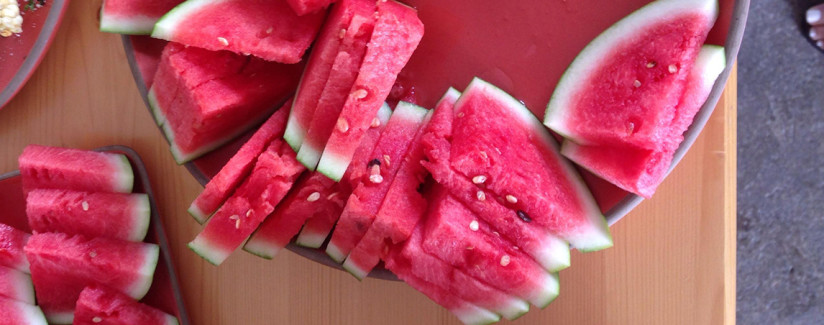
Spittin’ Seeds? Not with Seedless Watermelons
Did you know we have been enjoying seedless watermelons for more than 50 years? How do you get seedless watermelons, though? Dr. Kevin Folta, professor and chairman at the University of Florida, explains how one of our favorite summer treats came to be. Spoiler alert: It’s not through genetic modification!
What is the process for breeding seedless watermelons?
Dr. Folta: “Breeding seedless watermelons requires a genetic cross, transferring the pollen from one type of watermelon to another. Here’s the trick – in plants, polyploids are common. Polyploids are defined as organisms that contain many more than the normal number of chromosomes. In plants, it is common to find instances where the chromosomes have doubled, meaning two sets from the female and two sets from the male, four sets all together. The extra genetic material is not a problem andl in many cases, it helps create larger fruits with better quality.
“Now imagine if you cross a polyploid watermelon (two sets of chromosomes from the female) with a diploid (one set from the male). The resulting offspring will be triploid (one too many chromosome sets). This odd set of chromosomes is tough for a plant cell to understand, and so the cells don’t develop, and the seeds are not viable.
“You see many examples of odd chromosome numbers leading to seedless varieties: bananas, some apples and certain citrus varieties.”
Are there different varieties of seedless watermelons?
Dr. Folta: “Yes, there are many.”
Is there a difference in texture or taste between seedless and seeded watermelons?
Dr. Folta: “There shouldn’t be very much. Any differences are more likely due to genetic differences between different varieties rather than the extra chromosomes.”
If you’re looking for information on how to pick the perfect watermelon, we’ve got you covered. Need a visual on the process? We got you covered.
Photo: “2013 East Grand Rapids 4th of July Parade and Fireworks July 04, 2013 86” by Steven Depolo is licensed under CC BY 2.0



























